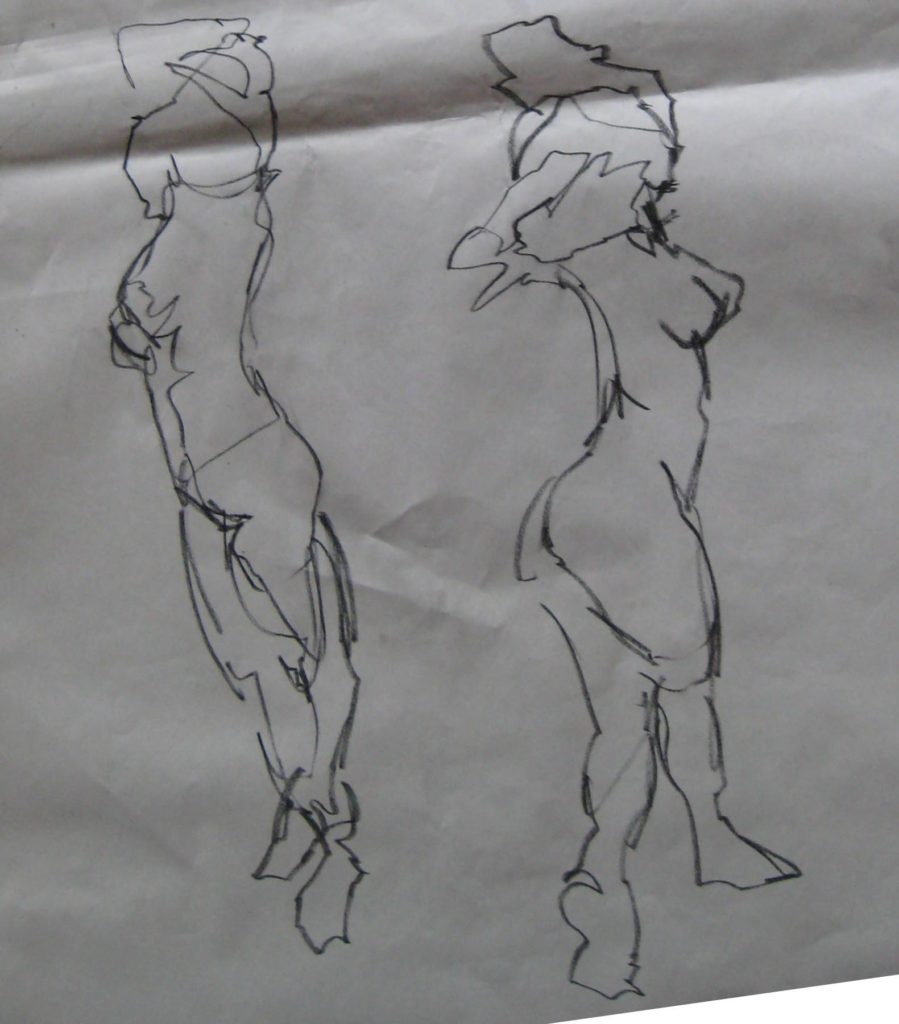Continuous Line Drawing
Continuous Line Drawing
Continuous line drawing is as easy as it sounds. Just put your mark maker on the paper, start drawing, and don’t take your marker off the page until you have finished the drawing.
As with any drawing, you should not spend too much time on any one area of the drawing, but let your mark maker flow freely over all areas of the figure. If you focus on one area at a time your drawing may become unbalanced and poorly proportioned. The continuous line is a great method to help you consider the whole figure rather than just a part of it.
This technique is great for loosening up. It forces you to put lines where you don’t see lines – because you have to get from one place on the paper to another. It forces you to draw faster than you might be used to – if you don’t draw quickly you are just holding your pencil against the paper. The continuous line may look scribbly – that’s good! Let go and allow yourself, just this once, the luxury of not having to draw a masterpiece.
Try this technique in life drawing classes where you will generally start the class drawing a number of short poses of 1-2 minutes. Or use it before a more considered drawing to help yourself observe and deal with the challenges of the figures’ pose.
2 x 60-second continuous line drawings – though I suspect the artist may have lifted the charcoal once or twice!
Continuous Line Drawing is also called gesture drawing. The aim is to capture what the figure is doing, to show the action of the figure on the page. If the figure is relaxed then try to capture that relaxation in your drawing. If the figure is tense try to capture that. If the figure leans, has its weight on one foot, lifts something, holds something, twists or bends, then try to capture that with your continuous line.
The continuous line is a great technique to try when learning how to draw figures. Try it now.
Remember, keep that pencil on the paper until you have finished!
